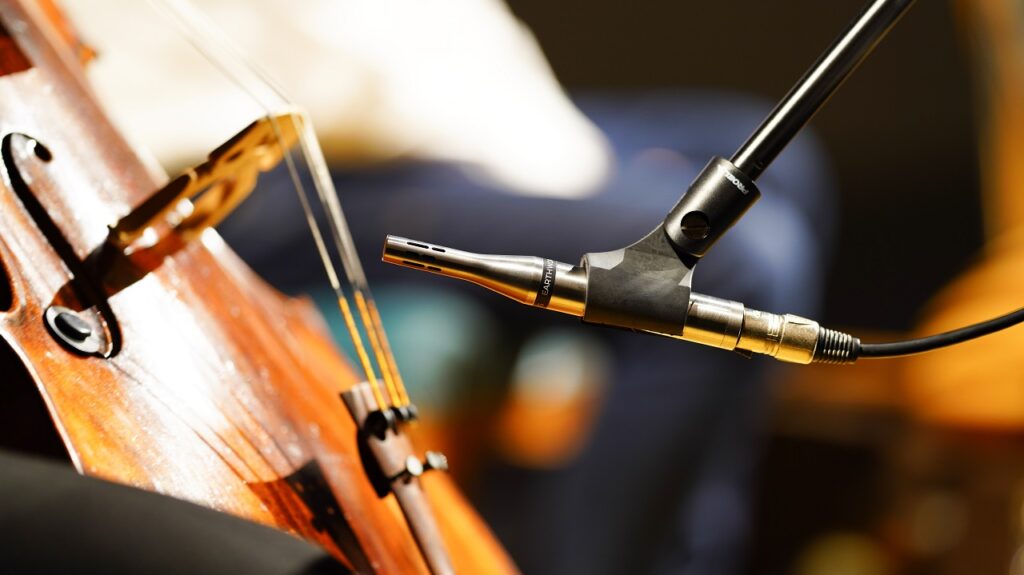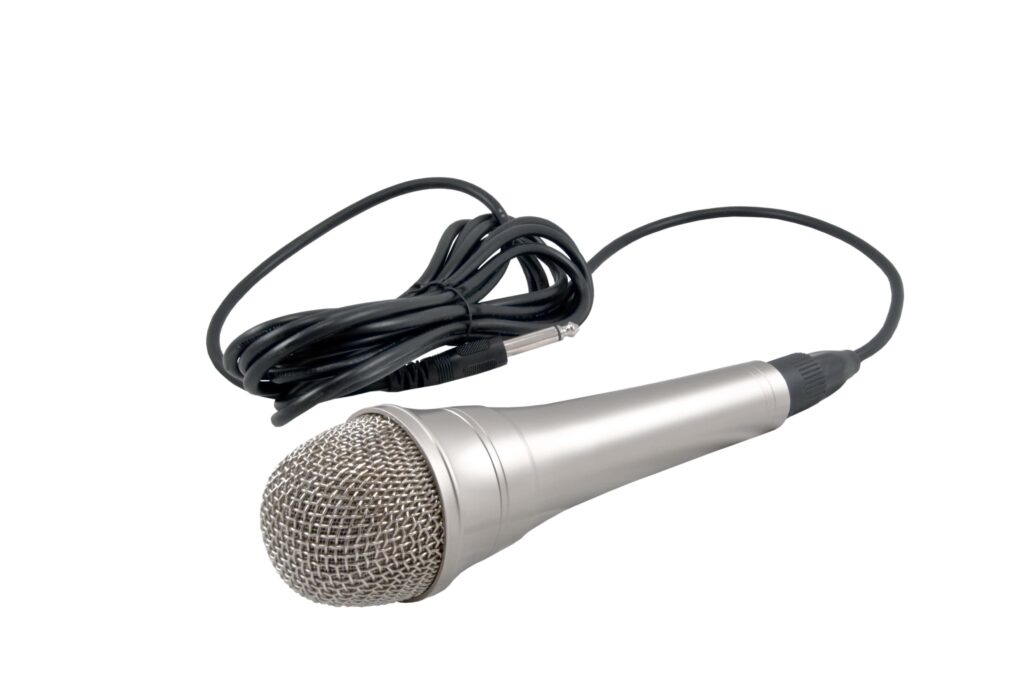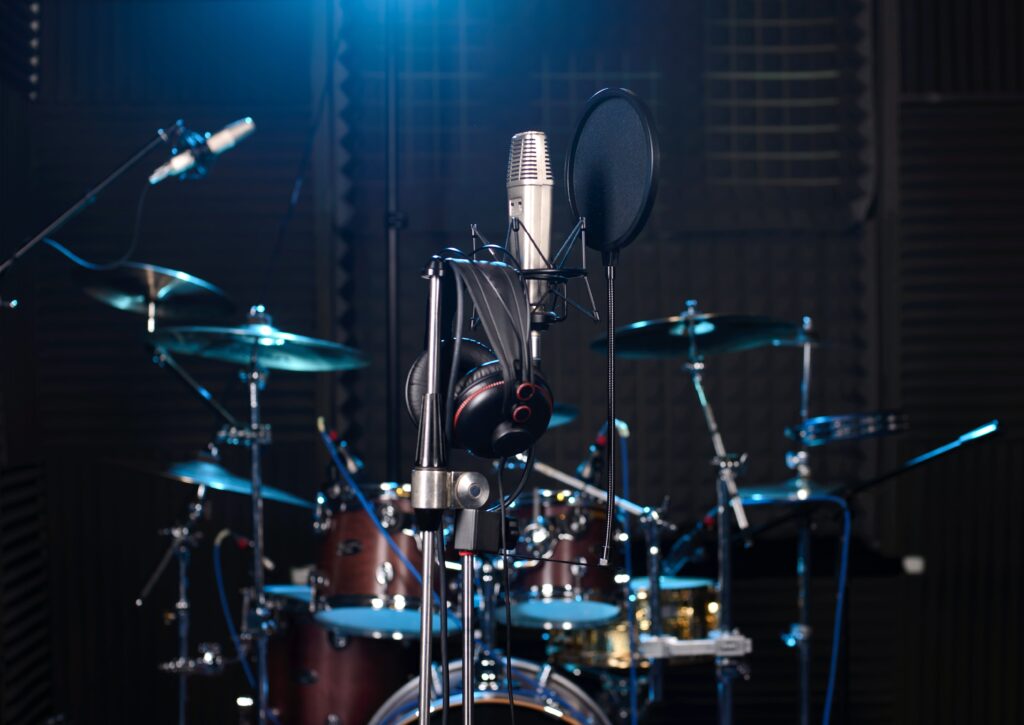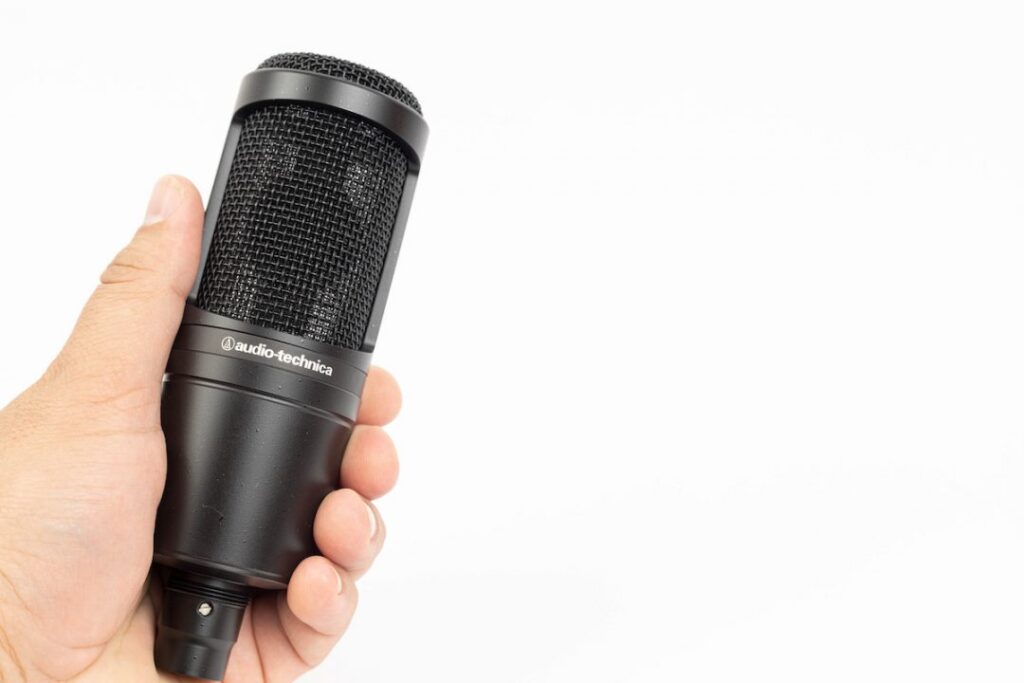Instrument microphones are a type of microphone specifically designed to capture the sound of musical instruments. They are commonly used in recording studios, live music performances, and other settings where the sound of musical instruments needs to be captured accurately.
Types of Instrument Microphones
Several instrument microphones are available, each with its unique set of characteristics and applications. Some common types of instrument microphones include:
- Dynamic microphones: These microphones use a moving coil to change the sound waves into an electrical signal. They are rugged and durable, making them ideal for use on stage or in other high-stress environments.
- Condenser microphones: These microphones use a thin, electrically charged diaphragm to convert sound waves into an electrical signal. They are sensitive and responsive, making them ideal for capturing the nuances of a musical performance. However, they require external phantom power, which can be a limitation in some situations.
- Ribbon microphones: These microphones use a thin metal ribbon to convert sound waves into electrical signals. They are known for their warm, natural sound and are often used to capture the sound of stringed instruments, horns, and other acoustic instruments.
- Piezoelectric microphones use a crystal or ceramic element to convert sound waves into electrical signals. They are resistant to moisture and can be used in wet or humid environments, making them ideal for outdoor performances or recording sessions.
How Instrument Microphones Work: A Technological Insight
Instrument microphones are intricate devices designed to capture the nuances and subtleties of musical instruments. Understanding the technology behind these microphones sheds light on their ability to deliver exceptional sound quality.
Brief Overview of the Technology
Instrument microphones operate on transduction principles, converting acoustic energy (sound waves) into electrical signals. They consist of essential components such as diaphragms, coils, and magnets. When sound waves hit the diaphragm, they vibrate, causing the lock (attached to it) to move within the magnetic field, subsequently generating an electrical current. This current is transformed into an audio signal that mirrors the original sound wave.
Diaphragm Types and Their Impact
Instrument microphones feature different diaphragm types, primarily condenser, dynamic, and ribbon. Condenser microphones, with their lightweight diaphragms, offer high sensitivity and response to subtle sound variations, making them suitable for capturing intricate sounds of acoustic instruments. Dynamic microphones, equipped with heavier diaphragms, are more robust and can handle higher sound pressure levels, making them ideal for amplifying loud instruments like guitar amplifiers and drums. Ribbon microphones, utilizing a thin metal ribbon as the diaphragm, deliver warm and natural tones, often preferred for recording brass instruments and strings due to their smooth sound capture.
Polar Patterns and Their Relevance
Polar patterns dictate the directionality of microphones, influencing where they capture sound effectively. Common polar patterns for instrument microphones include cardioid, supercardioid, and omnidirectional. Cardioid microphones capture sound predominantly from the front, making them excellent for isolating individual instruments in a live setting. Supercardioid microphones have a narrower pickup pattern, ideal for reducing side noise. Omnidirectional microphones capture sound from all directions, which is useful for recording ambient sounds or group performances.
Choosing the Right Instrument Microphone: A Guide to Precision
Selecting an instrument microphone is a nuanced process that involves considering various factors to ensure optimal sound capture. Here’s a detailed guide to help you make the right choice:
Factors to Consider
Assessing the instrument type is essential when choosing an instrument microphone, as different instruments produce diverse sound frequencies. For example, a condenser microphone might be ideal for capturing the delicate tones of acoustic instruments, while a dynamic microphone could handle the powerful sound of amplifiers and drums. Additionally, evaluating the sound environment is crucial; live stages require microphones with excellent noise rejection, whereas studios might need microphones that capture subtle nuances. Budget is another vital factor, but fortunately, quality options are available across various price ranges.
Matching Frequency Response
The microphone’s frequency response should align with the instrument’s tonal qualities. For instance, instruments with extended low frequencies, like bass guitars and kick drums, benefit from microphones with a more inadequate frequency response. In contrast, instruments with bright and airy tones, such as cymbals or acoustic guitars, better complement microphones with a higher frequency response. Matching these elements ensures that the microphone captures the instrument’s true essence, faithfully representing its sound.
Case Studies and Examples
Illustrating the right microphone choices through case studies is invaluable. For instance, a jazz guitarist might find a condenser microphone with a flat frequency response ideal for capturing the instrument’s rich tones. On the other hand, a rock drummer might opt for dynamic microphones with high SPL handling for close miking the drums. In orchestral settings, ribbon microphones could beautifully capture the nuances of string instruments. These real-world examples serve as practical guides, helping musicians and audio engineers make informed decisions tailored to their specific instruments and contexts.
Factors to Consider When Choosing an Instrument Microphone
There are Some important and considerable factors to consider when choosing an instrument microphone, including:
- Frequency response: The response of a microphone refers to the range of frequencies it can capture. Different instruments produce sound at different frequencies, so choosing a microphone with a frequency response that is well-suited to the device you are trying to capture is important.
- Polar pattern: A microphone’s polar pattern refers to how it captures sound. Some microphones are omnidirectional, meaning they capture sound equally from all directions. Others are directional, meaning they are more sensitive to sound coming from a specific order. The polar pattern of a microphone can be important when trying to capture sound from a particular source, such as a guitar or a vocalist.
- Sensitivity: The sensitivity of a microphone refers to how well it captures sound. Some microphones are more sensitive than others, meaning they can capture quieter sounds more clearly. This can be important when trying to capture the nuances of a musical performance.
- Durability: If you are using the microphone in a live performance setting, it’s important to choose a durable microphone that can withstand the rigors of the road.
Common Misconceptions about Instrument Microphones: Dispelling Myths
In audio technology, misconceptions often arise, particularly concerning the role of microphones. Addressing these fallacies is essential to understand their purpose and significance within the musical landscape clearly.
Microphones as Instruments
One prevalent misconception is the notion that a microphone is an instrument in itself. While microphones play a pivotal role in sound amplification and recording, they are not musical instruments. Microphones are tools employed to capture and amplify sound, enabling musicians and vocalists to share their artistry. Unlike traditional instruments like guitars or pianos, microphones do not produce sound independently but serve as transducers, converting sound waves into electrical signals. Understanding this distinction is crucial to appreciating the collaborative synergy between musicians and their audio equipment.
Microphones as Tools, Not Instruments
Another misconception arises from the misunderstanding of microphones as musical instruments. Microphones are integral tools musicians and audio engineers use to enhance the quality and reach of live performances and recordings. They are designed to faithfully capture the sound produced by instruments and voices, preserving the nuances and subtleties of the music. While microphones contribute significantly to the final auditory experience, they are not instruments in the traditional sense. Musicians create melodies, harmonies, and rhythms, while microphones faithfully translate these artistic expressions into electrical signals for amplification and recording.
By clarifying these misconceptions, it becomes evident that microphones are indispensable tools for musicians and audio professionals. Their nuanced functionality enhances the auditory experience, bridging the gap between live performances and recorded music. Embracing microphones as essential components of the audio landscape allows artists to utilize them effectively, enriching their performances and recordings with unparalleled clarity and depth. Understanding these distinctions fosters a more profound appreciation for the intricate interplay of technology and musical creativity.
Instrument Microphones in Professional Settings: Enhancing Audio Excellence
Instrument microphones are indispensable assets in professional audio settings, enriching the auditory experience across various domains. Here’s a glimpse into their pivotal roles in different professional contexts:
Recording Studios for Album Productions
In recording studios, instrument microphones are the unsung heroes behind creating musical masterpieces. Musicians and producers meticulously select microphones based on the tonal qualities they seek. Condenser microphones, known for their sensitivity, capture the subtleties of instruments with unparalleled detail. Whether it’s a saxophone’s warmth or a drum kit’s crispness, instrument microphones in studios ensure every note and beat is faithfully preserved. Engineers strategically position these microphones to achieve the desired sound, shaping the overall sonic landscape of albums.
Live Concert Setups and Sound Reinforcement
Live concerts demand robust, reliable microphones capable of withstanding the rigors of the stage. Dynamic microphones shine in this environment, capturing the energy of live performances. Instrument microphones are strategically placed on stages to amplify instruments such as guitars, drums, and brass instruments. Their ability to reject ambient noise ensures a clear and focused sound, even amidst the roaring cheers of the audience. Sound engineers rely on these microphones to balance the mix and deliver a captivating live experience to concertgoers.
Broadcasting, Film, and Television Production
Instrument microphones play a vital role in broadcasting, film, and television production, capturing sound for various purposes. In television shows and movies, they capture dialogue, music, and ambient sounds, enhancing the audiovisual experience. Hypercardioid and shotgun microphones excel in these scenarios, isolating specific sounds while minimizing background noise. Instrument microphones are essential for radio programs, podcasts, and interviews, ensuring crystal-clear audio transmission to listeners.
Conclusion
Instrument microphones are an essential tool for capturing musical instruments’ sound in various settings. Whether you are recording in a studio or performing live, it’s important to choose the right microphone for the job. By considering factors like frequency response, polar pattern, sensitivity, and durability, you can find the perfect instrument microphone for your needs.
What is an instrument microphone?
What is a good microphone for instruments?
There are many factors to consider when choosing a good microphone for instruments, including the type of instrument you are trying to amplify, the type of microphone you prefer (such as a dynamic or condenser microphone), and your budget.




